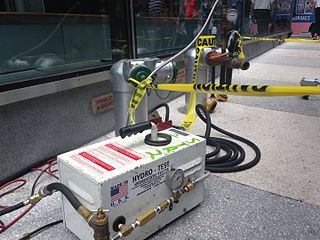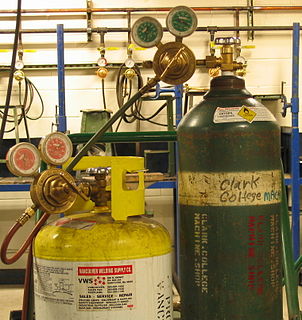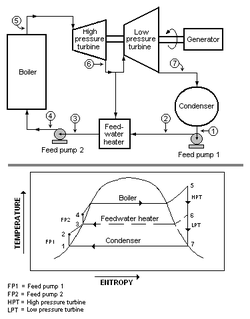MDMT is one of the design conditions for pressure vessels engineering calculations, design and manufacturing according to the ASME Boilers and Pressure Vessels Code. Each pressure vessel that conforms to the ASME code has its own MDMT, and this temperature is stamped on the vessel nameplate. The precise definition can sometimes be a little elaborate, but in simple terms the MDMT is a temperature arbitrarily selected by the user of type of fluid and the temperature range the vessel is going to handle. The so-called arbitrary MDMT must be lower than or equal to the CET (which is an environmental or "process" property, see below) and must be higher than or equal to the (MDMT)M (which is a material property).

A pressure vessel is a container designed to hold gases or liquids at a pressure substantially different from the ambient pressure.

The American Society of Mechanical Engineers (ASME) is an American professional association that, in its own words, "promotes the art, science, and practice of multidisciplinary engineering and allied sciences around the globe" via "continuing education, training and professional development, codes and standards, research, conferences and publications, government relations, and other forms of outreach." ASME is thus an engineering society, a standards organization, a research and development organization, an advocacy organization, a provider of training and education, and a nonprofit organization. Founded as an engineering society focused on mechanical engineering in North America, ASME is today multidisciplinary and global.
Critical exposure temperature (CET) is the lowest anticipated temperature to which the vessel will be subjected, taking into consideration lowest operating temperature, operational upsets, autorefrigeration, atmospheric temperature, and any other sources of cooling. In some cases it may be the lowest temperature at which significant stresses will occur and not the lowest possible temperature.
An operating temperature is the temperature at which an electrical or mechanical device operates. The device will operate effectively within a specified temperature range which varies based on the device function and application context, and ranges from the minimum operating temperature to the maximum operating temperature. Outside this range of safe operating temperatures the device may fail. Aerospace and military-grade devices generally operate over a broader temperature range than industrial devices; commercial-grade devices generally have the narrowest operating temperature range.

In continuum mechanics, stress is a physical quantity that expresses the internal forces that neighbouring particles of a continuous material exert on each other, while strain is the measure of the deformation of the material. For example, when a solid vertical bar is supporting an overhead weight, each particle in the bar pushes on the particles immediately below it. When a liquid is in a closed container under pressure, each particle gets pushed against by all the surrounding particles. The container walls and the pressure-inducing surface push against them in (Newtonian) reaction. These macroscopic forces are actually the net result of a very large number of intermolecular forces and collisions between the particles in those molecules. Stress is frequently represented by a lowercase Greek letter sigma (σ).
(MDMT)M is the lowest temperature permitted according to the metallurgy of the vessel fabrication materials and the thickness of the vessel component, that is, according to the low temperature embrittlement range and the charpy impact test requirements per temperature and thickness, for each one of the vessel's components.
The Charpy impact test, also known as the Charpy V-notch test, is a standardized high strain-rate test which determines the amount of energy absorbed by a material during fracture. This absorbed energy is a measure of a given material's notch toughness and acts as a tool to study temperature-dependent ductile-brittle transition. It is widely applied in industry, since it is easy to prepare and conduct and results can be obtained quickly and cheaply. A disadvantage is that some results are only comparative.










